![]()

300TDi into Defender - some useful information
Guide for DIY fitting - by Glencoyne Engineering
![]()
![]()
Plumbing and wiring
Your engine is now firmly bolted to the vehicle and now you "just" have to connect it all up. Be patient, there is still plenty to think about. I will try to cover the main problem areas, but there is a huge amount of variety in older Defenders and your vehicle may throw up a problem that I haven't dealt with here. If so, let me know and I will add the information to this page.
Fuel system
Nice and easy, so we'll do this first. Fuel filter - ideally you want to use the Disco filter housing with a new filter (AEU2147L). If converting an older diesel Defender you can use the old type filter, but you will need to blank off the unused ports. The Disco filter only has two - in and out (marked with arrows for direction of flow). I don't much like the old style filter - fiddly and prone to leaks. So I will assume that you are going to use the Disco filter.
Mounting the filter - easy on diesels, just bolt in place of the old filter using M8 bolts and large washers. Petrols do not have the threaded holes on the bulkhead, so you will need to fit M8 rivnuts. The filter fits approximately where the ignition coil previously sat. You might get away with large self-tapping bolts instead of rivnuts but the metal on that part of the bulkhead is fairly thin.
Fuel system plumbing is very simple. Fuel tank > lift pump > filter > injection pump > return line to tank. Working through from the beginning: The fuel line from tank to pump is quite large diameter, around 9.5mm. The 300TDi lift pump uses threaded unions - if you have these you can connect the fuel feed line to the pump with an appropriate piece of flexible fuel pipe and Jubilee clips. If you do not have the male threaded unions, carefully cut the female nut off the lift pump pipe and slide your flexible hose over the olive, secure with a Jubilee clip. Fuel feed from the tank connects to the upper of the two stubs on the 300TDi lift pump.
For petrol vehicles there is a bit more work to do. These have an electric pump - either bolted to the chassis or (on later vehicles) inside the tank. They also have a small bowl-type fuel filter - position varies depending on model, but it will be there somewhere. On earlier vehicles, the simplest solution is to remove the pump, filter and mounting plate altogether and run a new fuel line (8mm hose) direct from the tank to the lift pump. On later vehicles remove the pump assembly from the tank, detach and remove the pump and then extend the pickup pipe so that it reaches to about 10mm above the bottom of the tank. Refit the assembly to the tank and run a new fuel line to the lift pump as before. Note that you will need the union and pipe which attaches to the lift pump - make sure you get these off the donor vehicle - cut through the plastic pipe just below the end of the metal section, leaving the pipe and union attached to the lift pump.
Lift pump to filter - the Disco has a hard plastic pipe. Replace this with fuel hose slid over the ends of the unions - 8mm hose and clips again.
Filter to injection pump - 6mm hose will fit straight onto the outlet union on the filter and the inlet union on the injection pump. The inlet pipe is at the front of the pump. The pipe at the back is the return.
Return pipe - all Defenders including petrols have a return pipe to the tank. Connect this to the return outlet on the injection pump with yet more 8mm pipe.
Throttle cable - diesels already have a suitable cable. Petrols will need the cable replacing (ANR1419). You also need to remove and discard the choke cable.
Electrics
If you followed the advice on the last page your wiring loom will already be fitted to the engine and simply plugs in at the bulkhead. A few more things to think about:
Temperature sender - the Disco sender will not work with the Defender gauge. Replace with a standard Defender 300TDi sender (AMR3321)
Battery cables - the diesel cables are fine to use with the 200TDi. Petrols have thinner battery cables - these work OK (200TDis usually fire up very easily) but for cold weather use you may want to replace them with something heavier.
Earth wire - you will need a reasonably heavy duty cable or strap between the engine block and the chassis. The earth wire on older Defenders is not really up to the job and often breaks. Earth straps are readily available from motor factors, Halfords etc.
Heater plugs - if converting a diesel you can keep the key-operated heater plug system. 200 TDis will usually fire up with no preheat unless the temperature is well below zero. For petrols you will need to provide power to the heater plugs and the best way is to use the Disco heater plug relay and wiring. This connects up as follows:
Thick brown cable - to battery terminal on starter solenoid
Thick yellow/black cable - to heater plugs
White wire - to switched feed (piggy back terminal off the stop solenoid on the injection pump)
Red/white wire - splice into red/white wire which goes to the starter solenoid
This leaves two wires - black, and either black/yellow or white/brown. The 2.5 petrol has a switch strapped to the choke cable with two wires attached - black and black/yellow. This is for the choke warning light. Remove the switch and connect the two wires to your two remaining heater plug relay wires (black to black). Now when you switch on the ignition the choke warning light should come on, and go out after a few seconds. You will also here the relay click on when you turn on the ignition, then click off about 5-10 seconds after the warning light goes out.
Power steering pipes
High pressure pipe (pump to steering box) - you cannot reuse the Defender pipe as the union at the pump is different. There is no off the shelf pipe that will fit as far as I am aware. The closest you will get is a Defender pipe (ANR3125) but this is too short. There is a 30 degree bend in the steel pipe close to where it meets the rubber hose. You need to straighten this, then put a similar bend in the pipe about 100mm further along. This will allow the pipe to reach the pump. The pipe is quite thick, difficult to bend and easy to crack, so you will need to heat it with a blowtorch and bend it very carefully, a bit at a time.
Note that the above only applies to the most common 4-bolt or 6-bolt steering boxes. A few Defenders have acquired three bolt boxes from old Range Rovers which have different pipe unions. In this case you may have to go to a hydraulic hose specialist and see if you can get the flexible end from a Disco pipe crimped onto your old rigid pipe. Or you can try using an 8mm steel compression joint to connect the two pipes together.
Feed pipe (reservoir to pump) - replace with a length of 16mm ID rubber hose suitable for use with power steering fluid. A hydraulic hose specialist will have something suitable.
Make sure the pipework is properly secured. You may be able to use the old pipe clamps - otherwise use metal P clips for the high pressure pipe, and plastic or rubber lined P clips (or cable ties) for the feed pipe.
Vehicles without power steering
If your vehicle does not have power steering you have a problem, as the PAS pump is driven off the same belt as the water pump and alternator. Two choices: either convert to power steering (outside the scope of this article, but not too difficult) or strip down the pump, remove the rollers, pack it with grease and use it as an idler pulley. I have not tried this myself but cannot see why it would not work.
Radiator and intercooler
The Disco 300TDi uses the same radiator and intercooler as the Defender, but the frame is different. There is a small bracket on each end which needs to be cut off so that the frame will fit between the inner wings. The other difference is that the locating pins on the bottom are mounted on brackets, so if you fit the frame 'as is' the top edge will sit too high and foul the bonnet. If you can get hold of some Defender 200TDi radiator brackets (ESR282, ESR283, plus two mounting rubbers NRC5554) you can simply cut off the lower brackets and reweld flush with the frame. This will drop the radiator about 15mm. You will have to cut back the old offside mounting bracket so that you still have somewhere to put the bonnet prop.

Defender 200TDi radiator top bracket
Alternatively you can take a slice out of the brackets on the chassis. This will allow you to drop the radiator another 10mm which gives you a bit more room when using the old style radiator brackets. Either way you will then need to position and mark the brackets and weld 10mm diameter pins to the top of the radiator frame. You may need to take a bit of metal out of the old style brackets to clear the rad/intercooler mounting pins and the bolts which hold the frame top to the sides.
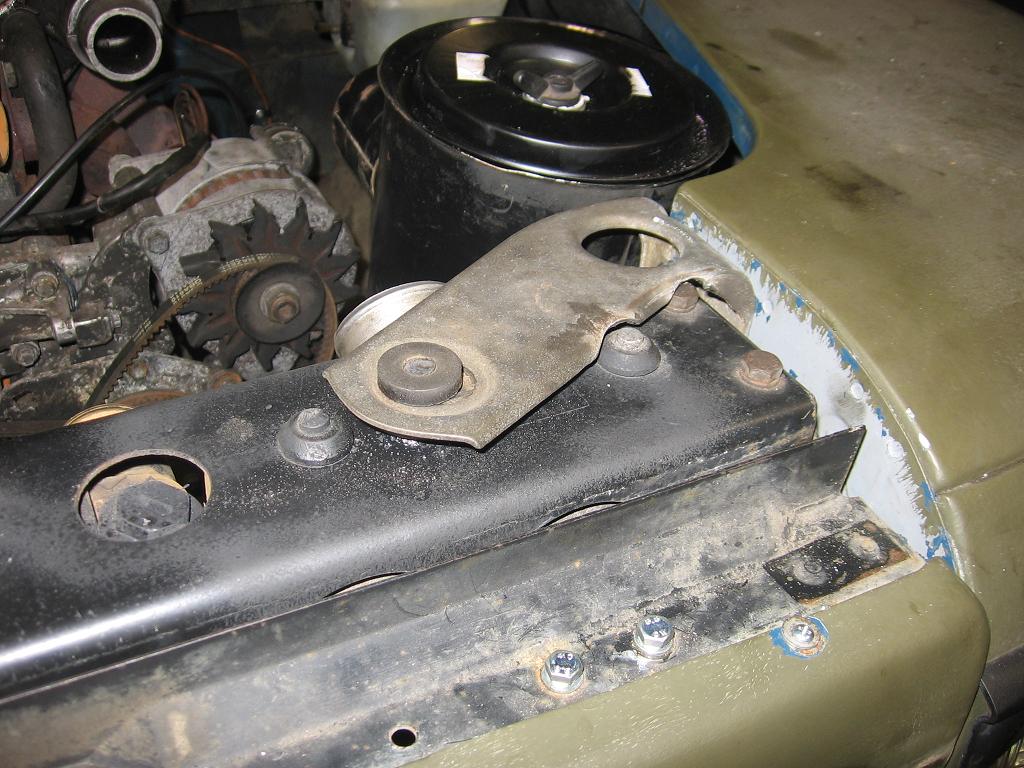
Old style radiator mount modified to fit TDi radiator
Cooling system hoses
Radiator top hose - use a Defender 200TDi hose NTC4895. If fitted in the 'normal' position this tends to get in the way of the top intercooler hose. So remove the thermostat housing, rotate 120 degrees clockwise and refit. Now the hose will fit (you may have to shorten it at the engine end) and will be well clear of any other pipework.
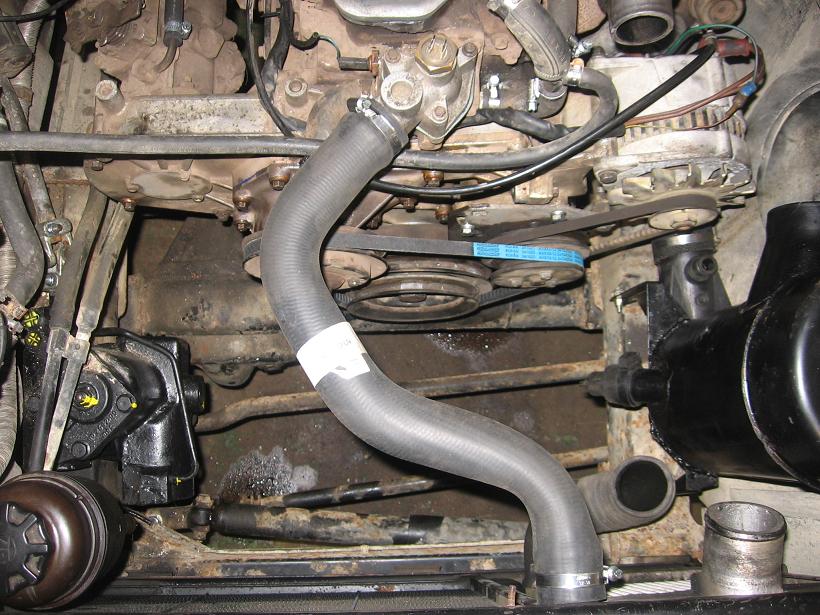
Top hose in place with repositioned thermostat housing
Bottom hose - use the Disco hose, cut and extended with a length of 38mm OD steel pipe around 220mm long. Make sure the hose does not rub on the steering box and is not kinked. You will also have to extend the pipe to the header tank - 15mm copper plumbing pipe works well here. Most vehicles have a 15mm pipe stub on the bottom of the reservoir but some early ones are 22mm. Again a plumbing supplier will help, with a 22-15mm reducer fitting which can be adapted to suit.
Heater hoses - easiest solution is to use off the shelf Defender hoses. If the pipe stubs on your heater face sideways use BTR1130 and BTR1132, for most older vehicles the stubs face downwards, in which case use BTR445 and BTR447. Or else you can adapt the Disco heater hoses using 15mm hose joiners and Jubilee clips.
Oil cooler pipes
The engine in a Disco 300TDi is much closer to the radiator than in a pre-1994 Defender, so the Disco oil cooler pipes will be too short. You have two options:
1. Extend the 300TDi oil cooler pipes by cutting the rigid section at the radiator end and brazing in lengths of steel tube to extend them. The heater pipes which run along the top of your old engine are exactly the right internal diameter and will do this job nicely provided they are not corroded internally.
2. If you do not have brazing facilities, Steve Parker Land Rovers will sell you a pair of modified pipes with this job already done. There is no off-the-shelf solution available from any other Land Rover vehicle.
Air cleaner and intercooler pipes
One of the bits that is much easier on a 300TDi than a 200TDi. Do the bottom intercooler pipe first - take the Disco steel pipe, right angled silicone hose from the Disco, and a 60 degree silicone hose as used on the old 2.5TD engine (part number
Exhaust system (updated 16/10/12)
If you are converting a 2.5TD your existing exhaust will work with the 200TDi, although slightly smaller in diameter than a 200TDi system. For all other conversions your old exhaust will be too restrictive and needs changing. For a 110 one option is a 2.5TD exhaust system which should fit onto the existing mountings. But what I would recommend, for either a Ninety or One Ten, is the exhaust centre and rear sections from a 300TDi, with a shortened Defender 200TDi front pipe married to a Steve Parker downpipe adapter. For the Ninety the best system to use is the late 'export spec' one as this does not need the mounting bracket on the drivers side chassis rail, which early Nineties do not have. The big advantage of the 300 systems is that the exhaust hangers are nice and simple - you can either make them, or buy them from YRM Metal Solutions (a lot cheaper than the original Land Rover parts).
Exhaust system part numbers:
Front pipe (200TDi) ESR158
Ninety centre and rear sections ESR4526, ESR4527
One Ten centre and rear sections ESR2383, ESR2384
You will also need three mounting rubbers (ESR3172)
When I get round to writing up my 300TDi conversion I will go into this in more detail - for now, here are a few pictures showing how I fitted an export spec 300TDi exhaust to a 1985 Ninety.
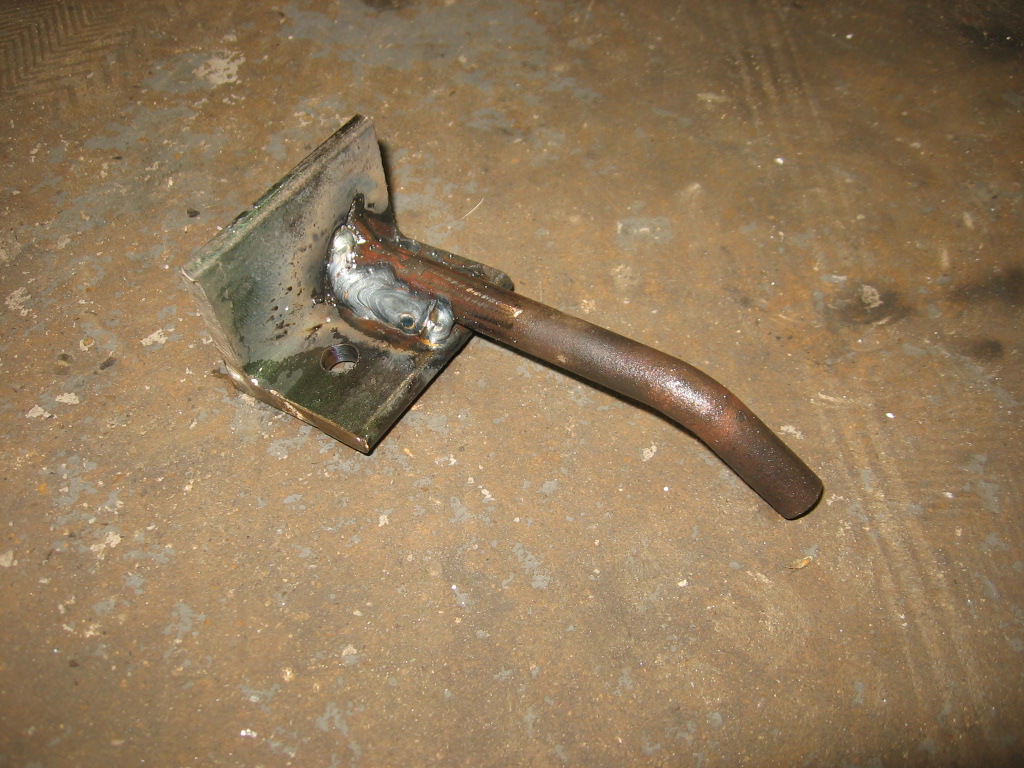
Rear mounting bracket - 10mm steel bar bent and welded to a piece of steel angle.
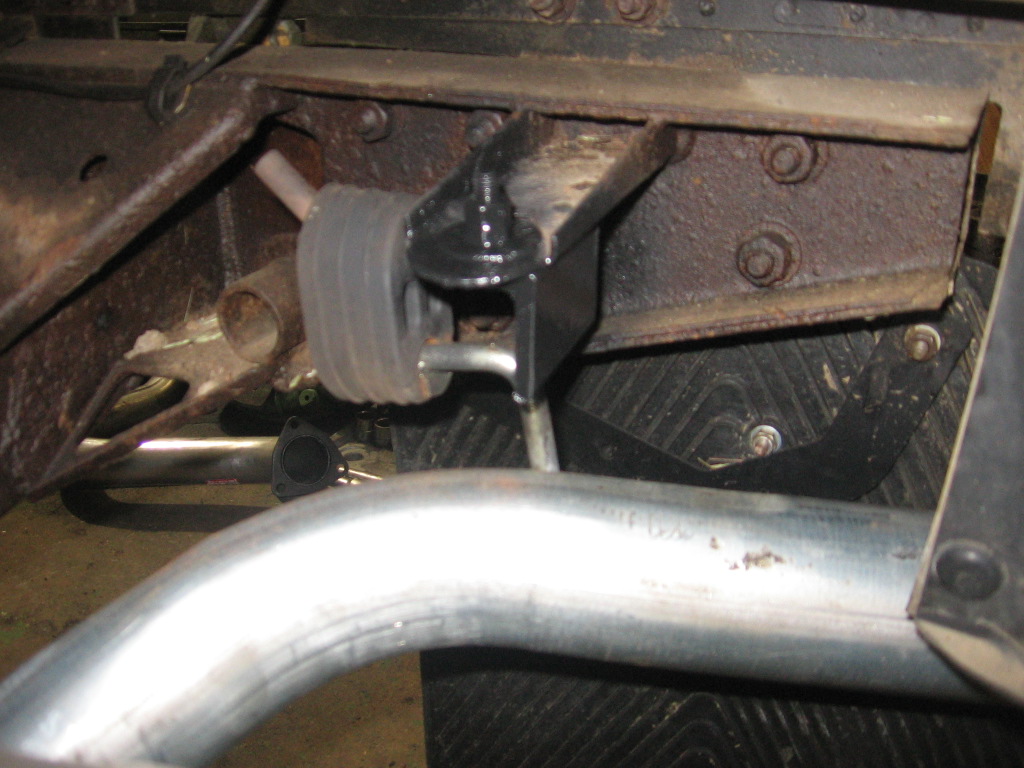
Rear bracket in place. The One Ten system uses the same mounting point here.
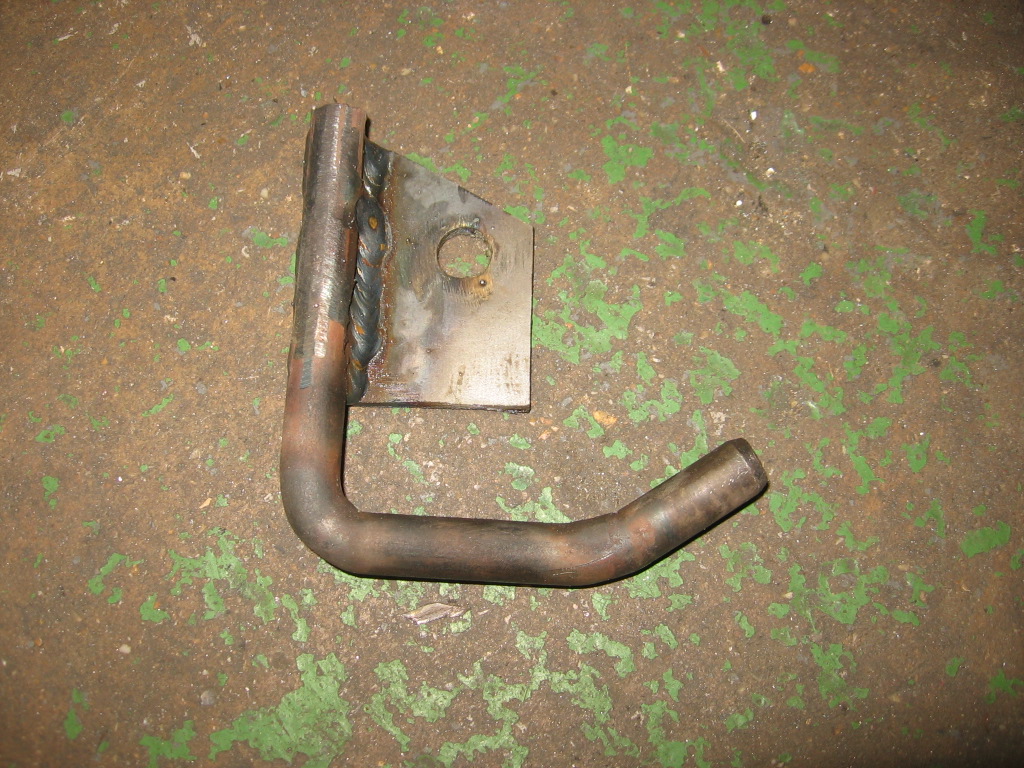
Front bracket - bolts to the back of the transfer box using one of the cover plate bolts.
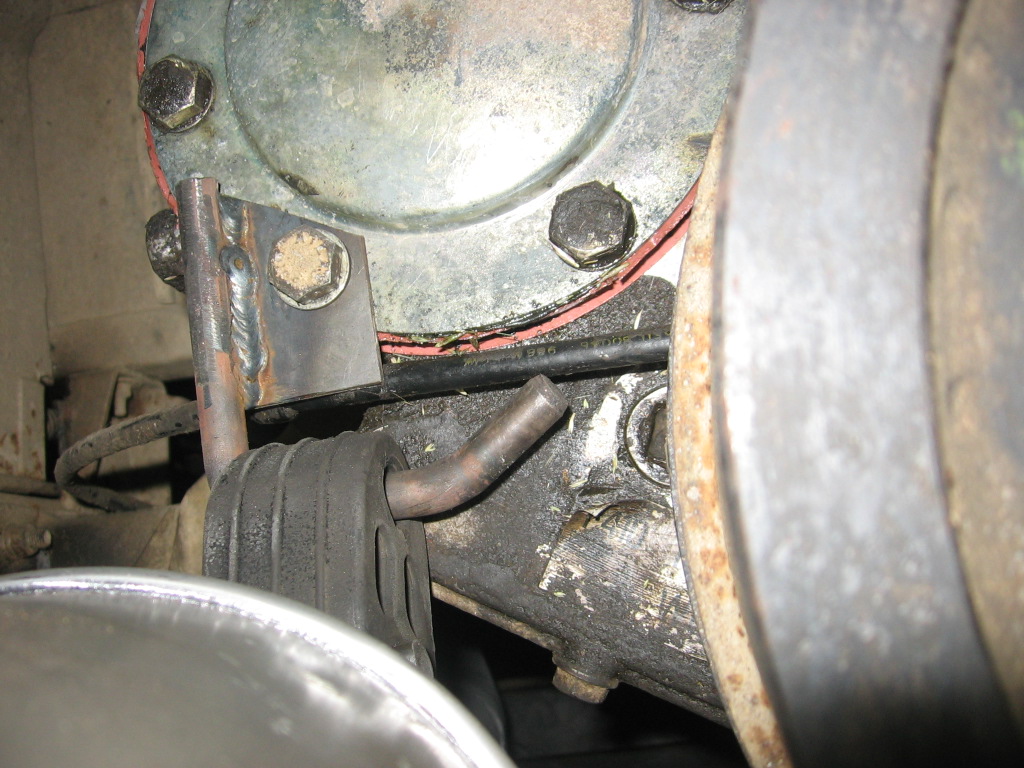
Front bracket in position
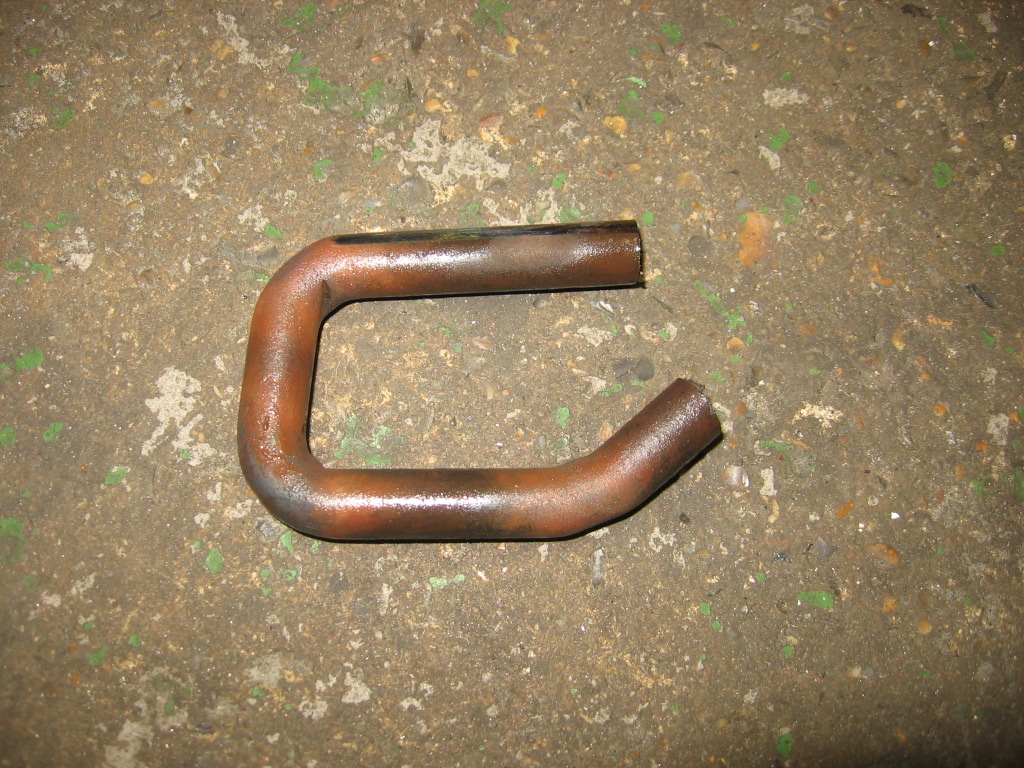
Centre bracket - welded to underside of crossmember. The One Ten uses the same bracket as the rear one, bolted to the existing exhaust mounting bracket on the chassis.
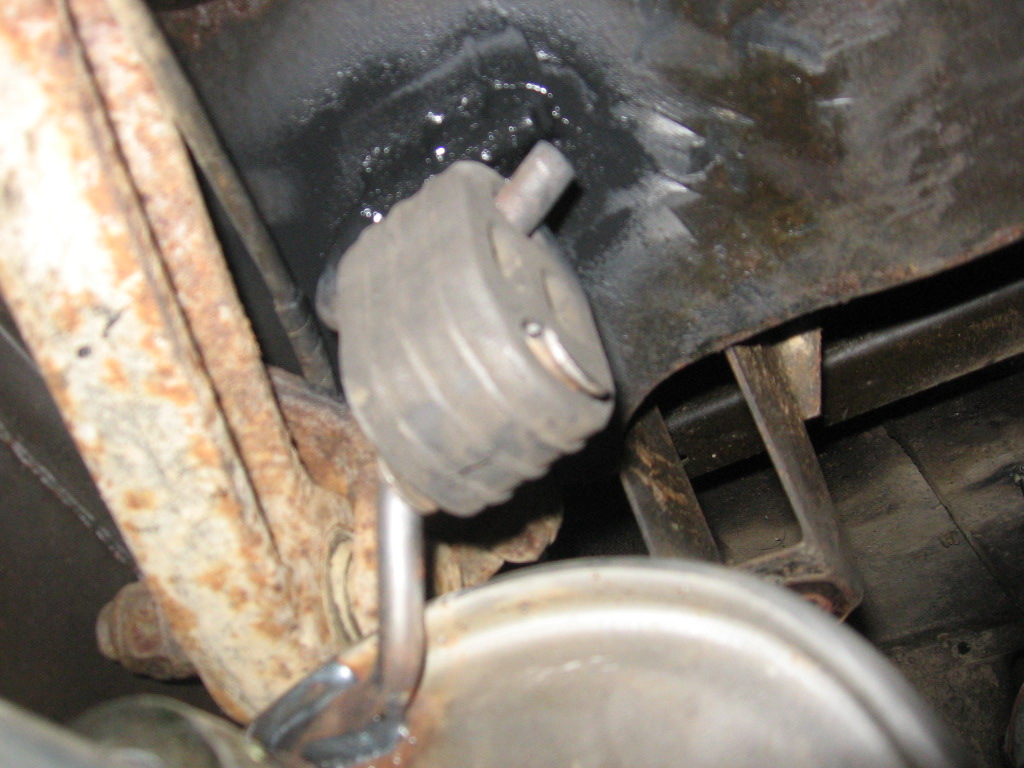
Centre bracket in position
Cooling fan
The Disco viscous fan sits a long way back from the radiator and without a fan shroud it will just stir up the air in the engine bay rather than drawing it through the radiator. It also tends to catch on the radiator hoses. It is possible (with a lot of hacking about and swearing) to turn a late 2.5 shroud upside-down and adapt it to fit, but an electric fan is a lot less work. An 11 inch fan is plenty big enough for normal duty. If your donor Disco has air conditioning you will find some more useful bits on it - two 11 inch fans on the front of the heat exchanger, and a thermostat housing with a 94 degree thermostatic switch built in. All you then need is a relay, in line fuse and some wire. Failing this a cooling fan kit from Kenlowe, Pacet etc will do the job.
At this point you should be about ready to go. Fresh oil, coolant and power steering fluid, bleed the fuel system at the filter, connect up the battery and turn the key. On petrol vehicles, don't forget to drain the fuel tank and put some diesel in it...
Next - questions and problems - click here